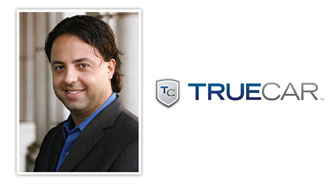New-Vehicle Transaction Prices Show November Drop

SANTA MONICA, Calif. -
New-vehicle transaction prices during November dipped thanks in part to a “more balanced” market, as opposed to November 2009, when the aftermath of CARS had resulted in purchases within some of the more expensive segments being delayed until the fourth quarter, according to TrueCar.com.
Specifically, the estimated transaction price in the U.S. for light vehicles during November was $29,136.
This represents a 2.5-percent year-over-year decrease and a 1.6-percent month-over-month decline.
“Cash for Clunkers pushed forward the sale of cheaper and more fuel-efficient cars last year, pushing luxury and SUV/truck buyers’ purchases into the fourth quarter,” explained Jesse Toprak, TrueCar.com’s vice president of industry trends and insights.
“This November, we’re seeing a more balanced picture of the industry, even with a strong mix of truck and SUV sales,” Toprak added.
Among the eight automakers listed by TrueCar (Chrysler, Ford, General Motors, Honda, Hyundai, Kia, Nissan and Toyota), Toyota and Honda were the only to show year-over-year transaction price declines. Toyota dipped 2 percent and Honda fell 1.2 percent.
Chrysler’s transaction prices were up 2.6 percent and Hyundai’s were up 1 percent, while the remaining four OEMs showed increases of less than 1 percent.
On a month-over-month basis, Nissan’s prices jumped 34.3 percent, while the remaining seven were all up less than 1 percent.
Continuing on, TrueCar also took a look at incentive trends for the month.
The average incentive during November was estimated at $2,712, which marked a slim year-over-year uptick of 0.4 percent and a 6.4-percent month-over-month increase.
“Even though incentives appear to be slightly higher this year, automakers are becoming smarter by focusing on low APR and special lease programs — strategies with relatively low costs due to near zero interest rates and much improved residual values,” Toprak pointed out.
Among the automakers listed in TrueCar’s data (Chrysler, Ford, GM, Honda, Hyundai/Kia, Nissan and Toyota), Honda showed the largest year-over-year gain in incentives (up 60.1 percent), while GM showed the largest decrease (16.3 percent).
Month-over-month, all were up, with Nissan (which increased 8.4 percent) leading the way.
TrueCar provided the following charts summarizing the data:
|
Transaction Pricing Forecast
|
|||||
|
Manufacturer
|
Nov. 2010 Transaction Price
|
Oct. 2010 Transaction Price
|
Nov. 2009 Transaction Price
|
Change Nov. 2010 to Nov. 2009
|
Change Nov. 2010 to Oct. 2010
|
|
$29,283
|
$29,164
|
$28,552
|
2.6%
|
0.4%
|
|
|
$32,033
|
$31,886
|
$32,017
|
0.1%
|
0.5%
|
|
|
$34,739
|
$34,605
|
$34,459
|
0.8%
|
0.4%
|
|
|
$25,164
|
$25,094
|
$25,465
|
-1.2%
|
0.3%
|
|
|
$20,443
|
$20,431
|
$20,249
|
1.0%
|
0.1%
|
|
|
$18,611
|
$18,504
|
$18,490
|
0.7%
|
0.6%
|
|
|
$27,447
|
$20,431
|
$27,417
|
0.1%
|
34.3%
|
|
|
$25,238
|
$25,200
|
$25,751
|
-2.0%
|
0.1%
|
|
|
Industry
|
$29,136
|
$29,601
|
$29,871
|
-2.5%
|
-1.6%
|
|
Incentive Spending Forecast
|
|||||
|
Manufacturer
|
Nov. 2010 Incentives
|
Oct. 2010 Incentives
|
Nov. 2009 Incentives
|
Change Nov. 2010 to Nov. 2009
|
Change Nov. 2010 to Oct. 2010
|
|
Chrysler
|
$3,452
|
$3,400
|
$3,550
|
-2.8%
|
1.5%
|
|
Ford
|
$2,942
|
$2,750
|
$2,650
|
11.0%
|
7.0%
|
|
GM
|
$3,350
|
$3,100
|
$4,000
|
-16.3%
|
8.1%
|
|
Honda
|
$2,162
|
$2,000
|
$1,350
|
60.1%
|
8.1%
|
|
Hyundai/Kia
|
$1,801
|
$1,700
|
$2,050
|
-12.1%
|
5.9%
|
|
Nissan
|
$2,764
|
$2,550
|
$2,700
|
2.4%
|
8.4%
|
|
Toyota
|
$2,220
|
$2,100
|
$1,650
|
34.5%
|
5.7%
|
|
Industry
|
$2,712
|
$2,550
|
$2,700
|
0.4%
|
6.4%
|

 View The Latest Edition
View The Latest Edition

